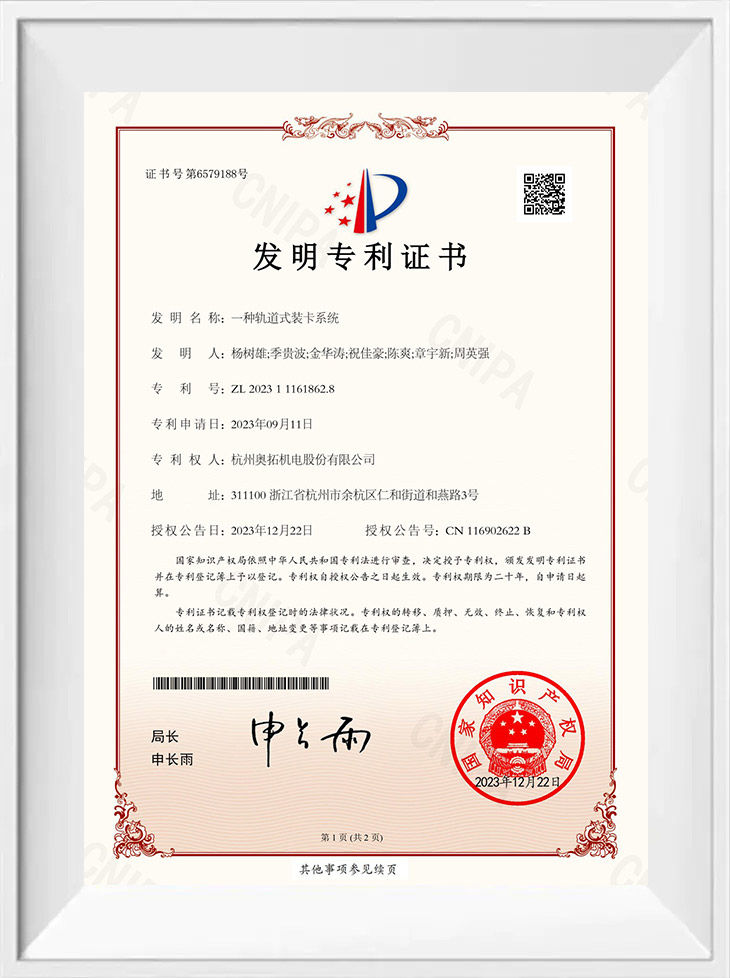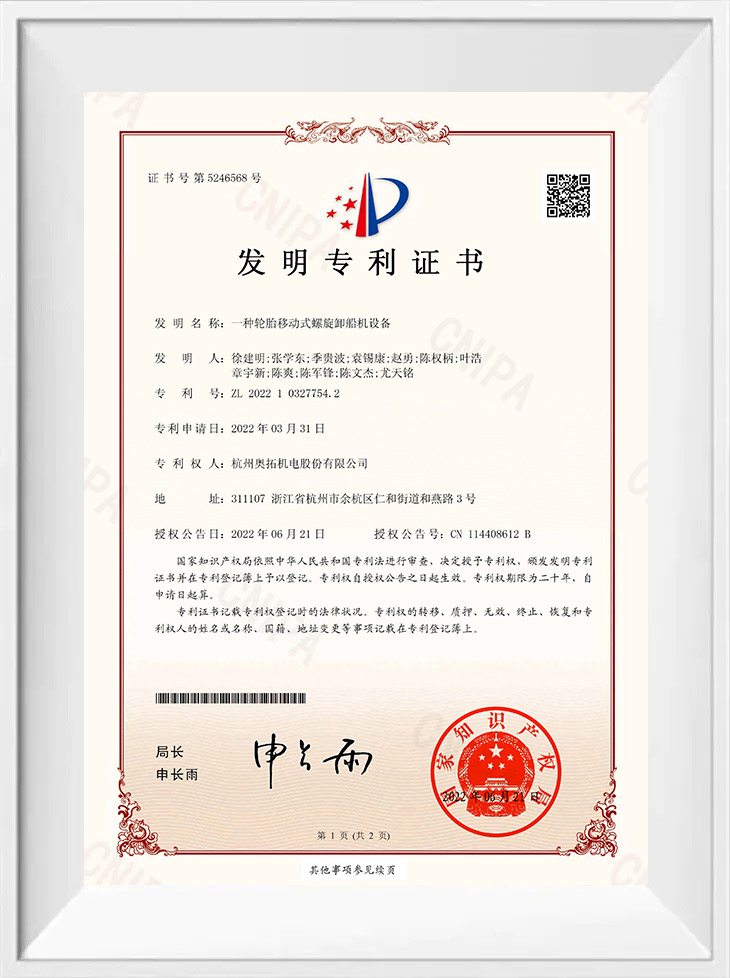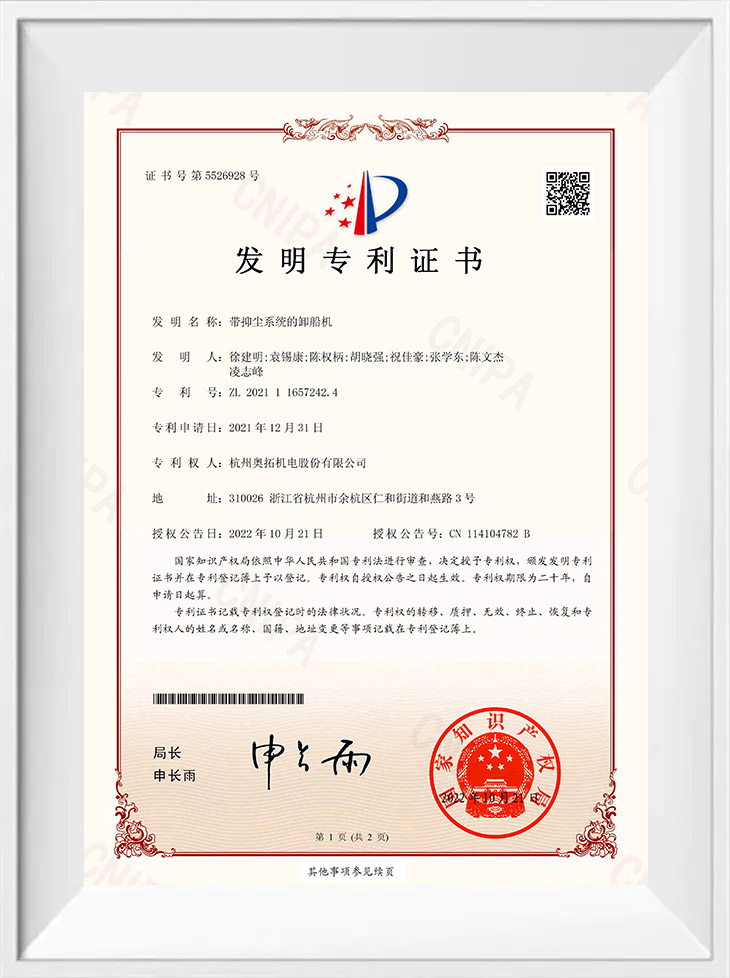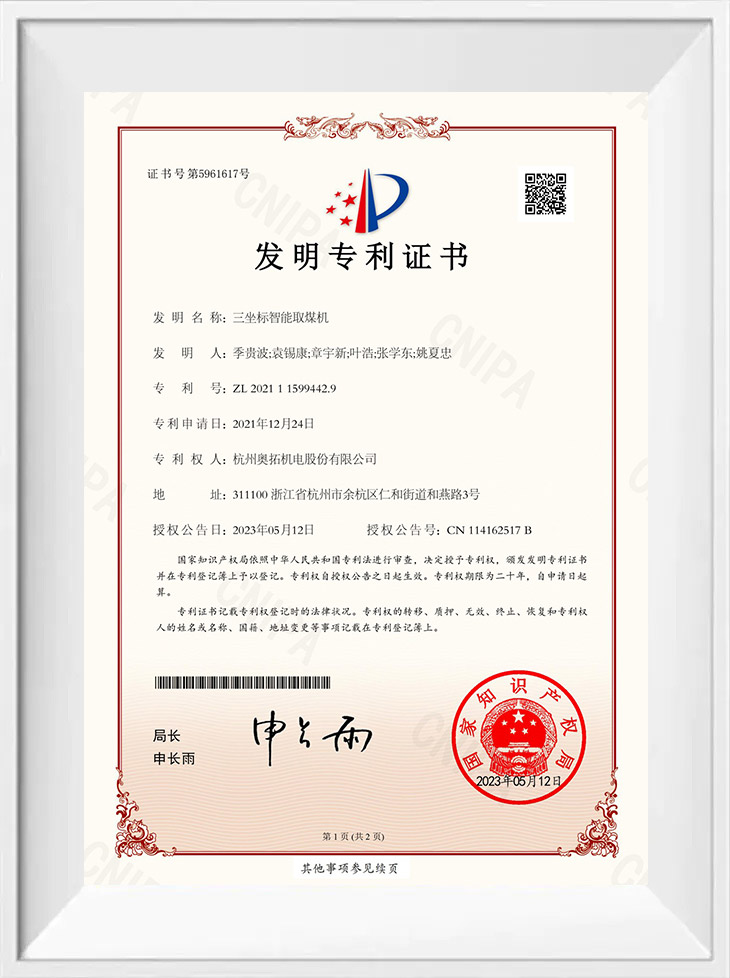-

Professionalism
-

Quality
-

One stop solution



News Center
News Updates
-
Admin 2025-12-19
Ensuring Efficient and Stable Operation of Ship Loader and Unloader Systems for Bulk Materials
Key Factors for Efficient Operation 1. Equipment Design and Structural Considerations Modern high-ca...Read More -
Admin 2025-12-12
Strategic Selection: Matching Ship Loader and Unloader Capacity to Port Operational Requirements
I. The Crucial Role of Bulk Material Handling Efficiency In the highly competitive dry bulk shipping...Read More -
Admin 2025-12-08
Aotuo Presents at Hangzhou Sand and Aggregates Supply Chain Innovation Exchange to Drive Industry Upgrading
Recently, the 2025 DongHai Forum—the Fifth China Sand and Aggregates High-Quality Development Summit...Read More -
Admin 2025-12-04
Maximizing Throughput: Precision Capacity Calculation for the Mobile ship unloader
Efficient port logistics depend on the reliable and rapid unloading of bulk cargoes. For the **Mobil...Read More -
Admin 2025-11-27
Operational Flexibility: Assessing Hatch Access and Clean-up Efficiency of Mobile ship unloader
For port operators and bulk material logistics companies, the true measure of a **Mobile ship unload...Read More -
Admin 2025-11-20
Environmental Compliance: Dust Suppression and Emission Control Features in Mobile ship unloader Systems
In the modern maritime industry, the operation of a **Mobile ship unloader** is scrutinized not only...Read More
500-200000 DWT 200-3000t/h Rail Mobile Screw Coal Ship Unloader Industry knowledge
What types of ships and port environments are Rail Mobile Screw Coal Ship Unloader suitable for?
Rail Mobile Screw Coal Ship Unloader is mainly suitable for the following types of ships and port environments:
Bulk carriers: especially bulk carriers carrying large amounts of coal. Since coal is a bulk cargo, the use of screw conveying can effectively unload coal from the ship's hold continuously without frequent grabbing and handling, thereby improving unloading efficiency.
Large ships: Due to its efficient unloading capacity and flexibility, Rail Mobile Screw Coal Ship Unloader is particularly suitable for handling large amounts of coal on large ships. This equipment can complete the unloading of large amounts of coal in a relatively short period of time, reducing the ship's stay time in the port.
Coal carriers of various tonnages: From small and medium-sized to ultra-large coal carriers, as long as their cabin structure and cargo characteristics are suitable for screw conveying, Rail Mobile Screw Coal Ship Unloader can be considered for unloading.
Ports with different water conditions: This unloader has the ability to adapt to a variety of water conditions, including deep-water ports, shallow-water ports, inland ports, and coastal ports. Its track movement system allows the equipment to operate at different positions and angles to adapt to different berths and ship positions.
Ports with high environmental requirements: Since the screw conveying method can better control dust flying than the traditional method, Rail Mobile Screw Coal Ship Unloader has become an ideal choice for ports with high environmental requirements. It can reduce dust pollution during coal unloading and protect the port environment and the health of workers.
What are the precautions for the maintenance and troubleshooting of the Rail Mobile Screw Coal Ship Unloader?
The maintenance and troubleshooting of the Rail Mobile Screw Coal Ship Unloader is a key link to ensure its efficient and stable operation. Here are some precautions:
Maintenance precautions
Regular inspection and maintenance:
Daily inspection: A comprehensive visual inspection of the equipment should be carried out before and after daily operations, including the screw conveyor, track system, transmission system, electrical system, etc., to ensure that there is no abnormal wear, looseness or damage to each component.
Regular maintenance: According to the operating instructions and maintenance manual of the equipment, a detailed regular maintenance plan should be formulated, including changing lubricating oil, cleaning filters, checking fasteners, etc., to ensure that the equipment is in good working condition.
Lubrication management:
Regularly lubricate each lubrication point of the equipment to ensure that the friction pairs of each moving part are in good lubrication state and reduce the occurrence of wear and failure.
Use lubricating oil and grease that meet the requirements, and avoid mixing lubricating oils of different brands and models.
Electrical system maintenance:
Regularly check the wiring, plugs, switches and other components of the electrical system to ensure that the electrical connection is reliable and there is no looseness, corrosion or short circuit.
Clean and dustproof the electrical components such as motors and control cabinets to prevent dust and moisture from damaging the electrical system.
Safety device inspection:
Regularly check the safety devices of the equipment, such as limit switches, emergency stop buttons, protective covers, etc., to ensure that they function normally and can quickly cut off the power supply or stop the equipment in an emergency.
Record and file management:
Establish a complete equipment maintenance record file, and record in detail the time, content, replacement parts and other information of each maintenance, so as to provide a basis for the subsequent management and troubleshooting of the equipment.
Precautions for troubleshooting
Troubleshooting:
When the equipment fails, first conduct a preliminary investigation based on the fault phenomenon to determine the approximate scope and possible causes of the fault.
Use professional detection tools and equipment to conduct detailed inspection and testing of the faulty parts to accurately determine the cause of the fault.
Troubleshooting:
Take appropriate treatment measures according to the cause of the fault, such as replacing damaged parts, adjusting equipment parameters, repairing electrical faults, etc.
In the process of troubleshooting, the safety operating procedures should be strictly followed to ensure the safety of personnel and equipment.
Fault prevention:
Summarize and analyze the handled faults, find out the root causes and potential hidden dangers of the faults, formulate corresponding preventive measures and improvement measures to avoid similar faults from happening again.
Professional maintenance:
For some complex faults or faults that require professional maintenance skills, the equipment manufacturer or professional maintenance organization should be contacted in time for handling to avoid greater losses or safety hazards caused by self-handling.

 EN
EN English
English 中文简体
中文简体 Français
Français

















